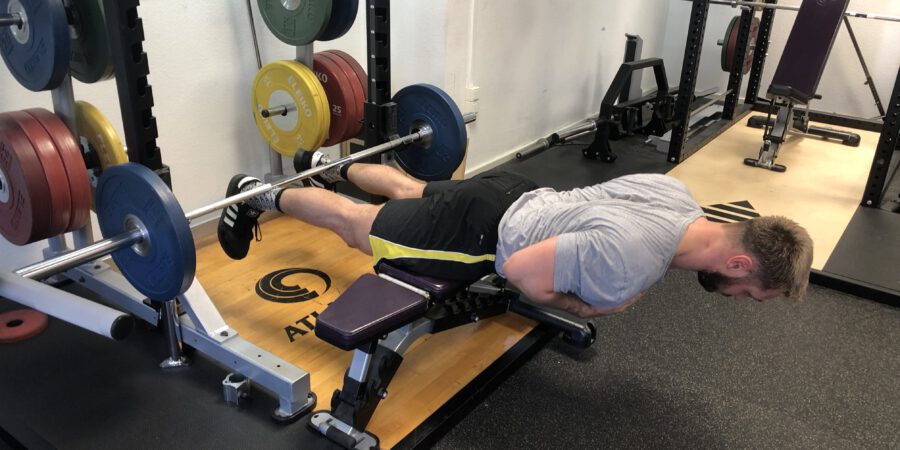The horizontal back extension is one of the oldest exercises in strength training for the lower back.
Strictly speaking, however, it is not only an exercise for the lower back but also for the hamstrings and buttocks. And thus the posterior chain.
Why the Back Extension is not actually a Back Extension
The lower back takes on a primary stabilizing role in the exercise, while the movement comes primarily from the hamstrings and glutes, which stretch the hips.
Strictly speaking, the back extension is not a back stretch - back = back and extension = stretching - but primarily a hip stretch.
Of course, in the lower position, the back is slightly bent and thus the back is stretched in the upper position. Most of the work, however, is done by extending the hips.
The Two Great Benefits of Horizontal Back Extension
The main benefit of back extension is that it primarily trains in hip extension.
There are different variants of the back extension, the most well-known being the 45° beck extension and the horizontal back extension.
The most resistance and the primary range of motion that is overloaded is in the horizontal back extension at the top.
In particular, the glutes are overloaded in their contracted position. At the same time, the lower back must stabilize the spine at the point where the longest lever is. This is the longest horizontal distance between the head and the hips as the pivot point and hence the most low back recruitment.
Therefore, the horizontal back extension is excellent for training the lower back.
The second major advantage of the horizontal back extension is that, unlike other exercises that train the lower back very effectively, such as the squat and squat, the horizontal back extension does not exert any vertical forces on the spine.
From a neuromuscular perspective, these vertical forces on the spine, while critical to developing strength, are also very tiring and associated with a higher risk of injury.
Thus, the horizontal Beck Extension allows a training stimulus on the muscles with less neuromuscular fatigue. And of course a lower risk of injury.
This makes the horizontal back extension an excellent complement to the primary exercises of the posterior chain and lower back, the squat, and the sacrum.
The two main variants of performing the horizontal beck extension
Dynamic execution on reps
The classic variant of performing the horizontal extension is on repetitions. Ie we move in alternation between concentric and eccentric phase, if necessary with a break at the upper point. Quasi classic dynamic repetitions.
This type of execution is excellent in the range of 6-25 repetitions.
And a pause after the concentric phase at the top of 1-3 seconds is also very effective to overload this weakest area the most.
Isometric execution on time
The second major variant of performing the horizontal Beck Extension is an isometric technique.
That means the exercise is done by just holding it in the up position.
The main goal is to increase strength and endurance in the upper area.
A set duration of 45-120 seconds is ideal for this type of execution.
In both variants of the execution, a dumbbell in front of the chest or a barbell in the neck can be used as additional weight.
In the event that the gym in which you train is not spatially designed to use a barbell, an SZ dumbbell in the neck is also ideal, which is significantly shorter than the barbell and therefore takes up less space.
Due to its lower neuromuscular complexity, the horizontal beck extension is an exercise that can be used in the second part or after the main exercise in a leg workout.
What machine do you do the horizontal back extension on?
There are basically two options here:
option 1
You have a horizontal back extension or glute ham raise machine at your gym. Then just use this.
option 2
If you don't have a horizontal back extension or glute ham raise machine, use a bench in combination with a rack and a loaded barbell as shown in the photo of this article. This variant is the variant that I recommend most often, since unfortunately too few studios and home gyms still have a machine specifically for the horizontal back extension glute ham raise. Fortunately, racks and benches can now be found in almost every studio and home gym.
The horizontal back extension is an excellent assistance exercise for training the posterior chain, especially for high reps and longer sets.
Try the horizontal back extension in your workout and feel free to write your feedback and previous experiences with this exercise in the comments below.
Good luck with the horizontal back extension!

